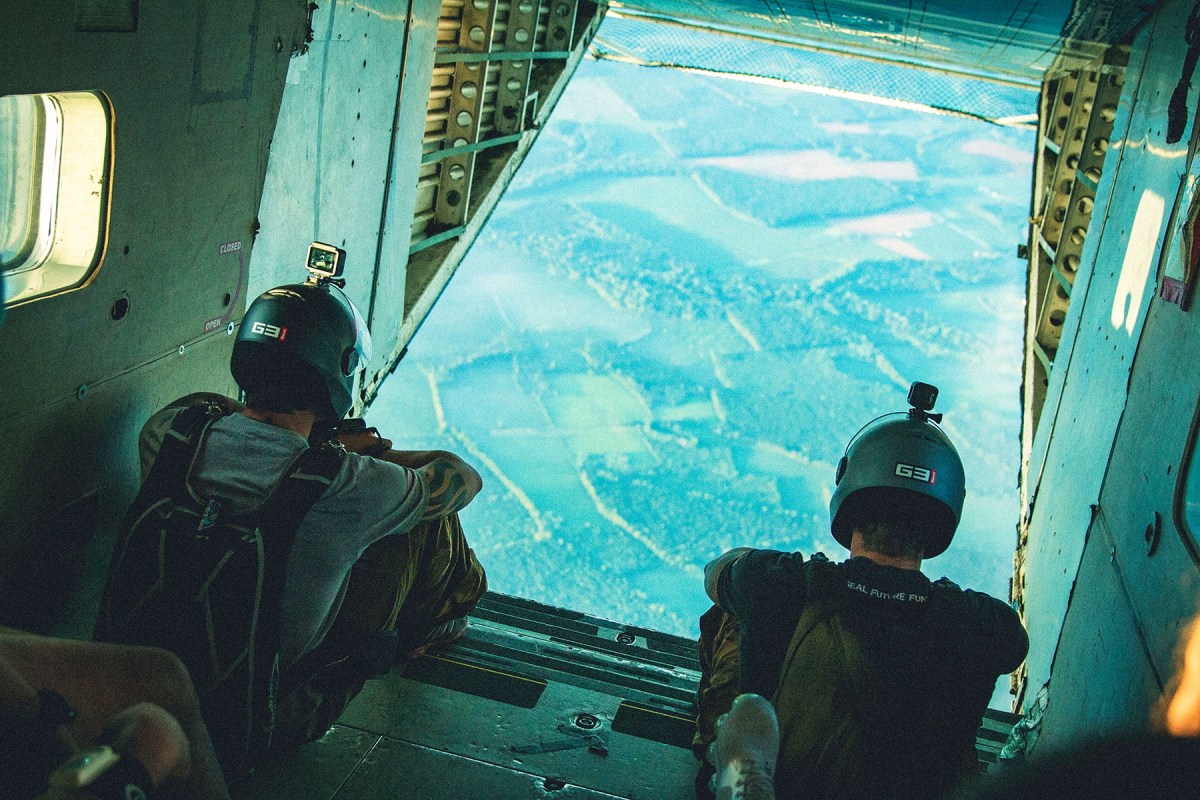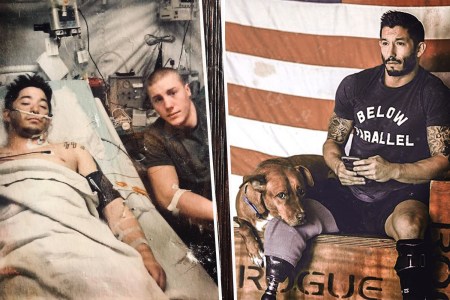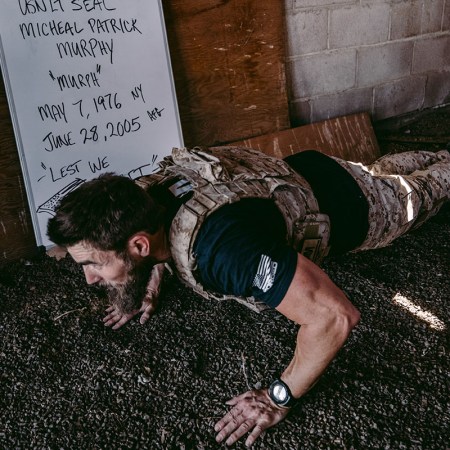The majority of the population associates the words “monster mash” with the rest of Bobby “Boris” Pickett and The Crypt-Kickers’ maddening, Halloween-themed chorus. But for the hopeful Navy SEALs going through BUD/S (Basic Underwater Demolition/SEAL training), the Monster Mash is something to truly be feared.
The Monster Mash isn’t just a workout, or a series of “evolutions” (as they call them in BUD/S), but a trial meant to bring you to the brink both mentally and physically. Think: an obstacle course designed to feel like a living nightmare, amplified by the fact that the participants are usually quite sleep-deprived.
Navy SEAL veteran Jonathan Wilson vividly remembers his own evolution, which took place during his last day of selection; it knocked out a number of his few remaining classmates. Wilson spoke to InsideHook about his own experience with the Monster Mash at BUD/S, and why it’s also the perfect name for the 211-mile endurance challenge that he will complete with some badass buddies this Veterans Day Weekend, in order to raise awareness for suicide prevention in the military community.
The only guarantees at BUD/S are that anything can go wrong and that something will always go wrong. Getting through the first try takes a lot of grit and a lot of luck. That became even clearer during one of the last phases of selection for me. Our instructors flew us out to San Clemente Island, which is the setting for the third phase. It’s a beautiful place but gets plenty cold at night, and they proceeded to beat the piss out of us. They were relentless. This place is away from the base where leadership is watching. Nobody was there to save us, no facilities to speak of, and the instructors were free to torture us as they pleased.
One of the harder evolutions during third phase that I remember is having to carry these metal pallets up a hill on the island. The pallets are used to ship military gear on — I don’t know exactly how much they weighed, but they were heavy and awkward to carry. They had us running up and down the hill with these pallets, and we were told to make it within a certain time. San Clemente Island was also the setting for the Monster Mash, the last evolution that we did…and the worst of it all.
The day started on the beach, wearing a 40-pound ruck on our backs. The swells were 10 feet high that day, and I watched guys from Tennessee trying to time waves for the very first time. We pulled our rucks in behind us and towed them for the two-mile route around the island. Those waves beat us up bad — 24 of us went into the water but not everyone got out by themselves. There were guys who had their collarbones broken, and that was the end of their selection. They were rolled out on the last day of BUD/S.
Getting in and out of the water after that swim, the beach reminded me of that scene from Saving Private Ryan, not as gory but almost as brutal. There were guys just being tossed around. Coming out of the ocean we were soaking wet; there we put the rucks back on and started running. We set off on an eight-mile trail with two gun stations along the way. First we shot the SIG Sauer P226 and then the M4, for time and accuracy. The last two evolutions were a rope climb and pull-ups both with the weighted pack.
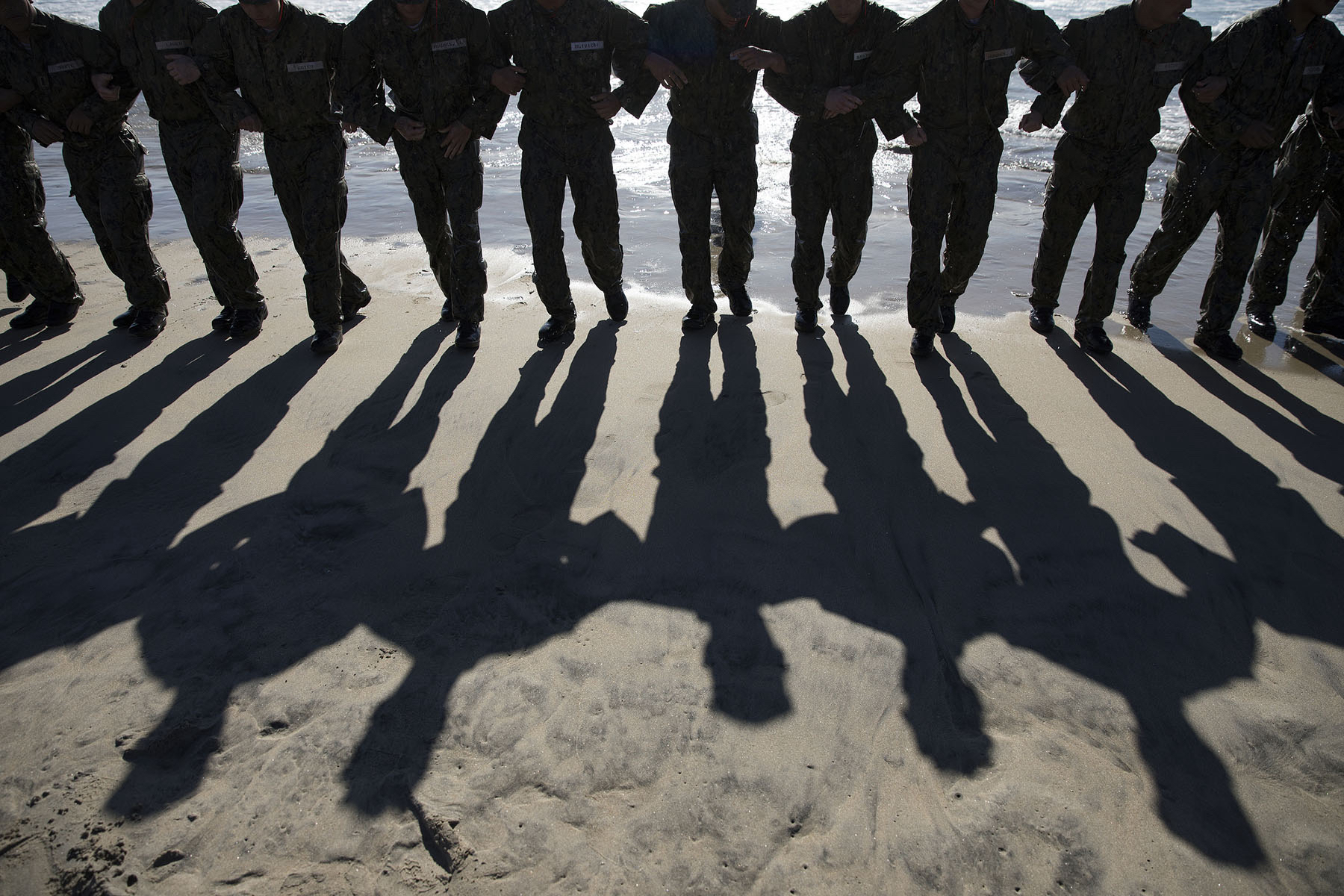
I was in the front of my class when we got out of the water. I thought I was going to be the first one to complete everything, but I got overzealous going into the rope climb. I was still wearing the booties that we wore for the water portion, which had no traction on the rope. I realized halfway up that it was going to be hard to make it all the way up. Looking back I should have stopped and changed into my boots, but I had this idea that I didn’t want to stop for anything.
So I started climbing up the rope with nothing but my arms. My upper body started to burn out fast, but thought I could make it to the top; I made a swing for the bell at the final moment and fell all the way down. My hands were rope-burned to heck. Another one of my classmates pulled ahead since he had put on his boots. I ended up finishing my pull-ups right behind the other guy, and I came in second. That fact still sticks with me, and I probably remember that part more than the cold and the discomfort.
How a Marine Sniper Survived an IED Explosion and Became an Endurance Champion
Currently on a 200-mile ruck through South Texas, there was a time where Corporal Nick Perales thought he might never walk againI remember in BUD/S our instructors would say to us, “You’re cold now, but this isn’t the coldest that you’re ever going to be.” They knew that when we were in Afghanistan in the open-door helicopters avoiding rocket fire, we were going to be colder than we were then and there. That mentality stuck with me. We were taught mental resiliency way before it became a fad. I’ve done hard things, but I’ve done harder things after them enough to know that you can always push yourself further. I learned that during our Monster Mash at BUD/S, and that is why it’s a fitting name for the endurance challenge we’re doing this November.
A few years back, our company INVI MindHealth did a two-mile swim and a 100-mile run in San Diego to raise awareness for suicide in the veteran community. This summer we decided on doing another challenge to keep getting the message out there, and we knew that we needed to go bigger. The only question was how we were going to do that. The answer? A one-mile skydive, a 10-mile swim and a 200-mile multi-day endurance challenge that we would conquer with our friends and family from the special forces community.
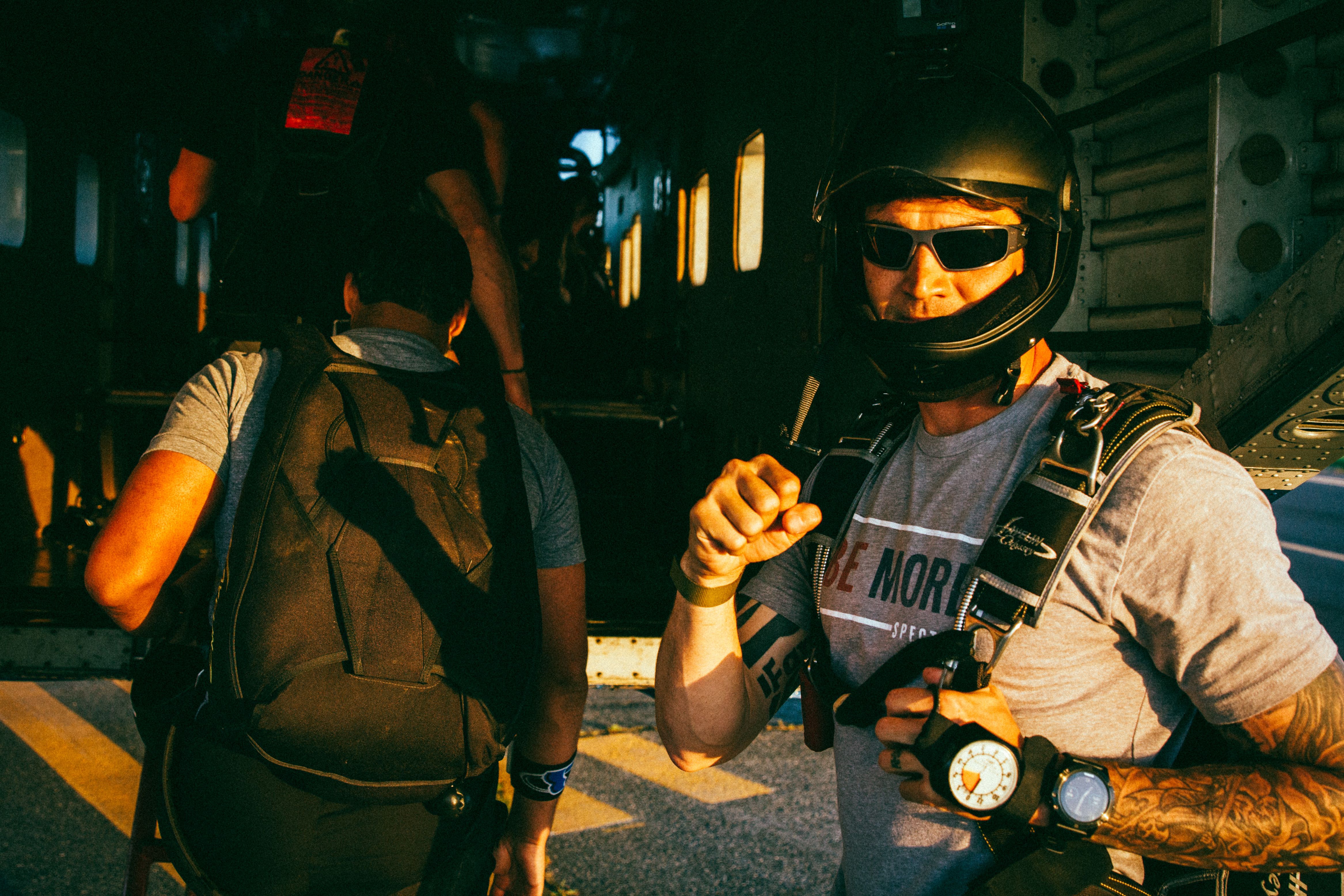
Our Monster Mash starts with us skydiving a mile into the Bighorn River in Wyoming. The gusts in the state are serious — they can go up to 70 miles per hour. They just shut down the highway because of the wind speeds, so we are praying that on the morning it doesn’t kick up that bad. For us over-40 guys from the special forces, who have our share of injuries, skydiving into the water will be a blessing as far as saving our knees and backs from further damage. The other number that we have to consider is the temperature of the water.
This challenge was concocted back in the summer, when the temperatures were a little more favorable, but the water that we are going into will be around 40 degrees or so. That’s going to be a shock to the system, but we’ve been training in cold water to prepare for that. We’ll have support boats there to pick up our gear, but then we’ll have to do the swim on our own with our kits. I don’t think many of us have swam more than eight miles, so this will definitely be a test for many of us.
Once we come out of the water, the final challenge begins. None of us really knows what happens to your feet after being in the water for 10 hours, but if you run the amount of miles we are going with your feet wet, your heel can just fall off. So we need to do our best to make sure that our feet are completely dry before we begin the running portion, which will take us along the base of the Bighorn Mountain Range. The terrain there is beautiful, but with the amount of miles we are doing, it will no doubt be punishing.
Our crew has been training for months with the help of performance coach Giovani Urrutia and a team from Exos. The workout plan was adapted for a bunch of old special forces guys with a whole bunch of injuries. There are guys in the group who have been in helicopter crashes, have broken backs, are missing limbs. On the trail, we’ll be wearing our kit from London Bridge Trading Company with our foundation colors and the symbol of a painted feather, which signifies that we’ve been injured.
The symbol also represents the people that we’re trying to help through our company INVI MindHealth with this event. We were taught in the teams that you’re supposed to suffer in silence. It works on deployment, but now guys are dying because they get out and they still think that way. Our mission is to bring attention to that suffering and help guys feel able to share what they are dealing with. The current medical model is failing them, and the system is falling short.
By not falling short with this mission we will help raise awareness and funds to help those teammates that are struggling. That’s all the motivation we need.
Whether you’re looking to get into shape, or just get out of a funk, The Charge has got you covered. Sign up for our new wellness newsletter today.
